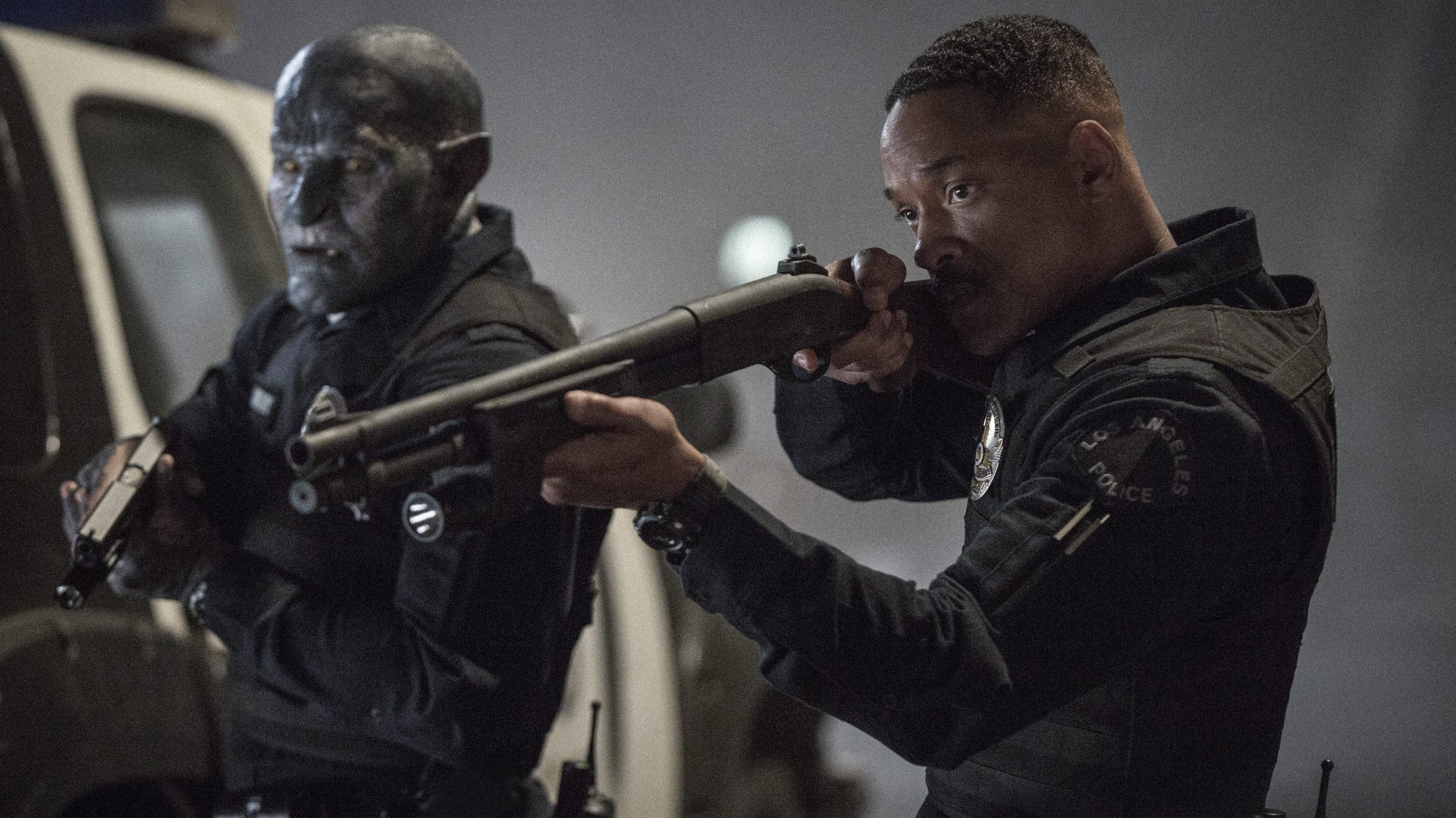Netflix’s first big movie “Bright” feels like a blockbuster built by an algorithm
Bright isn’t your typical blockbuster.


Bright isn’t your typical blockbuster.
The $90 million movie with action star Will Smith is the kind of tentpole project major studios rely on to bring in big box-office dollars. You’d expect to see it in theaters during the winter holidays, and promoted heavily with trailers and marketing materials. In typical Hollywood fashion, there’s already a sequel in the works. But you won’t find this movie in most cinemas. It’s on Netflix starting today.
The streaming-video service riffed on that with its campaign for the film, which revived the old movie hotline. You can dial 1-844-SEE-BRIGHT to be pumped up or insulted by Smith and hear showtimes, which include “anytime” and “after your eighth Christmas cookie.” (The movie will play in a few theaters in the US.)
Bright is too offbeat to land at a major studio. It stars Smith as a Los Angeles Police Department officer who is partnered with an orc and discovers a magic wand that can destroy the world. Yes, you read that right. Directed by David Ayer and written by Max Landis, there are also racial tensions rolled into the story in which orcs, fairies, elves, and humans co-exist. It’s basically Bad Boys meets Lord of the Rings, Chronicle, and End of the Watch.
It sounds like it was made by an algorithm. It checks off so many boxes it could land in anyone’s “Because you watched” recommendations:
- Buddy cop films ✅
- Fantasy epics ✅
- Crime thrillers ✅
- Sci-fi thrillers ✅
- Gritty dramas ✅
- Action and adventure ✅
- Will Smith ✅
That’s all Netflix needs, after all. Bright doesn’t need (or want) to compete with Star Wars: The Last Jedi, the movie that drove other potential blockbusters (except Jumanji) from theaters this December. Audiences can watch both. The barrier to getting someone to click on a movie that’s already included in their subscription service and looks mildly interesting—if not a tad absurd—with a big action star and notable director is much lower than convincing someone to go the theater, shell out $9 on average, and commit the next two hours of their lives to it. On Netflix, you can stop the movie midway through if it’s that bad and have no buyer’s remorse.
Initial reviews are not good. The Wrap said it was ”astoundingly bad in virtually every way.” But shows and movies on Netflix are recommended to members based on how likely they are to enjoy them, not how good they are. That’s why Adam Sandler’s awful comedies are the most watched originals on the platform. If the movie is fun to watch, that may be enough during a holiday weekend when folks have time to kill while traveling or visiting family. It has a 31% critics score on Rotten Tomatoes, (higher than most of Netflix’s Sandler movies) as of this writing, and 88% of audiences liked it.
If it bombs, no one will know. We’re dependent on Netflix for viewership numbers and it’s yet to reveal a flop. Third parties, like Nielsen, have attempted to quantify subscription-video viewership, too, but only release numbers for TV shows. Netflix has at least offered some signal that it’s pleased with the product: Smith is already signed on for sequel.
Buzzy films like Bright are important to Netflix. The platform, which says one-third of its viewing is consistently movies, is ramping up production on films to make itself less dependent on other studios. It plans to release 80 movies in 2018, up from 60 this year.
Netflix chief content officer Ted Sarandos said on a conference call back in April that Bright would set the bar for the kinds of movies audiences can expect from the service. “We think it will kind of give consumers and everyone who watches this space a better idea of the kind of things we’re up to in the movie space, which is those movies that you would see in the theaters, but they’re available to you day-in, day-out on Netflix, and that they look and feel like movies of that scale,” he said.
As it’s done in TV, Netflix is setting itself up to be a place where talent can take risks and move beyond their comfort zones—even if the movies themselves are not successful. Brad Pitt’s War Machine was too satirical of a war movie to hit big in theaters, but it brought a higher caliber of film to the streaming service this year. Martin Scorsese’s upcoming movie for Netflix isn’t like his other mobster movies—it’s about aging gangsters—but the director united the old guard for it and is attracting a lot of attention.
“The question is, can you shake up the market enough to come to expect big event movies to be only on Netflix—not on DVD, not on VOD, not in select theaters,” Sarandos said at a UBS investor even in December, “because we do want the consumer choice and that is a different experience.”